- Drivers
- Motorcyclists
- Bicyclists
- Pedestrians
- Intersections
Drivers
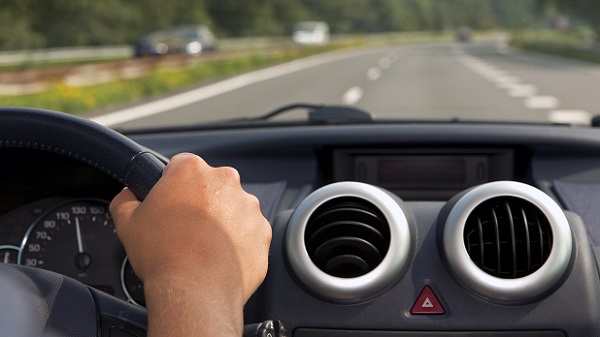
Driving by far is one of the most popular and convenient modes of transportation in the US. However, it still stands as one of the most dangerous modes of transportations, with fatal accidents in the thousands and injuries in the hundreds of thousands occuring in reported accidents every year. Injury severity must also be taken into account. While a driver might avoid a fatal accident, it can still place them in the hospital and cause permanent damage such as scaring or paralysis. There is a continual scury to make cars safer. A lot of weight is placed on the drivers to ensure they stay safe. Seat belts, head rests, turn signal bliners, head lights, breaks, break lights, air bags, the list goes on. With the introduction of new technologies such as backup cameras and the OBD II, cars are smarter than ever. Manufacturers have managed to substantially reduce accident rate. What could have been fatal accidents have become injuries. However no technology can be a substitute for a conscious driver.
Driving is mentally taxing. A driver must keep track of all road users and conditions at all times, often having to make descisions and act fast. Drowsy driving and drunk driving both greatly impair judgement and remain the top two causes of accidents and fatal accidents in the nation. It is also important to note that drivers are not only a concern for other drivers. Cars and trucks are threats to motorcyclists, bikers, and pedestrians - being the larger and more abundant "tanks" of the road who have a lot less to lose should they be in a collision.
Statistics and Data
10% of all drivers under 20 involved in fatal car crashes were distracted at the time of the crash. Distraction affected crashes resulted in 3328 deaths in 2012, and 421,000 people were injured due to distraction.[1]
18-23 year old males are statistically the most likely to both instigate and be affected by car crashes[2]
45-54 years old parents have the high percentage of car crashes (19.9% of all crashes), but these are typically not fatal (17.7% of all fatal accidents)[2]
Reaction time to expected event .6 -2 seconds [3] Reaction time unexpected event 35% increase[4]
1 of 3 deaths append because of side impacts (2004)[5]
25% of fatal accidents are due to drowsy driving[6]
Numerous products exist to promote better and more informed driving. Hands-free driving and data collection apps are among the top applications buzz. Less fumbling with the phone means more focus on the road, and an app that can give you coaching advice about bad habits can certainly help promote better ones. Back up cameras with night vision can be added onto even the older vehicles. Network apps exist for drivers to inform others of problems areas of the road and reward systems serve to give people points if they avoid speeding.
However, numerous challenges are also present. Drunk driving is hard to prevent as individuals may not be open to preventing themselves from driving, and as once the driver is in the car, it is already too late since the choice has been made. Products such as a back up camera, meant to be an additional security meansure to looking back, is used as a substitute. Data collection is not a catch all solution as it may not always promote change nor be used in mass - thus there are gapping holes of motivation. One more, while you might be doing all you can to be a safe driver, there is no guarantee that other drivers are. It only takes one.
Everyone who has ever driven a car has their own opinions on saftey and what can be done to improve driving. Everyone wants to feel safe. But with mass comes diversity, diverging opinions, differing motivations and differing priorities. Nonetheless, that does not mean we should give up. There is no single solution to permanently ending all traffic collisions, but multiple can work together to bring the rate of injuries and death down to 0%.
Existing Products
Monitors bad driving habits (using OBDII) such as rapid accelerating, hard braking and speeding and gives you practical advice on how to improve. Alerts you to engine problem codes and translates them into easy-to-understand language so you can avoid unnecessary trips to the repair shop.
An app that track your trips, watch your gas consumption, find nearby gas prices, detect crashes and alert emergency services, understand the warning messages your car’s computer throws and even locate a reliable mechanic who can resolve the problem
An OBD2 performance and diagnostic tool for any device that runs the Android operating system. It will allow you to access the many sensors within your vehicles Engine Management System, as well as allow you to view and clear trouble codes.
Sources and Further Exploration
[2]Analysis of Fatal Crash Data: "A Summary of Motor Vehicle Fatal Crash and Fatality Data from the Fatality Analysis Reporting System (FARS)"
[3]2011 Distracted Driving Statistics: "Most adults who drive admit to engaging in distracted driving behaviors, according to a HealthDay poll from November 10-14, 2011. More than 2,800 American adults responded to the poll. Results showed the following statistics..."
[4]Mobile Phone Use: A Growing Problem of Distracted Driving
[5]Intersection Safety: Summary of current issues and fact sheet
[6]DrowsyDriving.org: Fact sheet and statistics
Motorcyclists
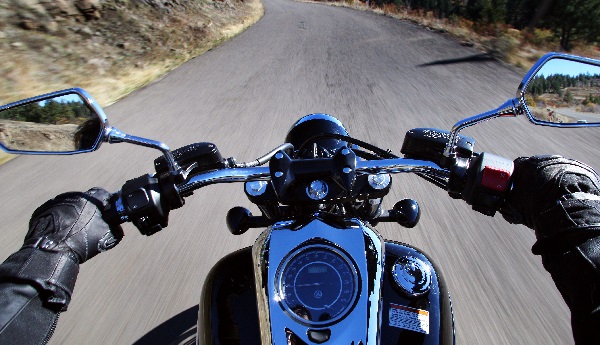
Whether riding on one solo, or joining up in a gang, motorcycles are on the rise as both a leisurely activity - especially in the US - and a form of fast transportation that is relatively inexpensive. For many motorcyclists, being one is more than just the convenience, it is part of a personal identity. It is a lifestyle. But the need for speed also must take into account saftey measures.
In contrast with cars, motorcyclists are far more exposed to external and environmental elements. High speed collisions can throw the rider from their bike. And while motorcyclists compose of only 3% of users on the roads, motorcyclists compose 11% of crash fatalities [2]. Helemet usage is stable, but not universal nor evenly distrubuted across the age groups. The market in general is extremely saturated with saftey products. From helmets to gloves to inflatable airbag vests. But when you are concerned about image, safety might not always be the "cool" or most convenient thing to go with - which presents a challenge in itself. While everyone wants to be safe, the threshold to get people to act for their own safety is very high.
Statistics and Data
The number of motorcycles on the road is increasing as well fatalities[1]
6.5 million motorcycles in 2006 to 8.1 million in 2012[1]
4,957 Motorcyclists died and 55884 were injured in 2012 - a 7% increase from 2011[1]
93,000 Motorcyclists injured in 2012[1]
26 times more likely than car to die in a crash per vehicle mile traveled[1]
11% of crash fatalities are motorcyclists, but motorcycles make up 3% of total vehicles on the road[2]
Average age of person involved in fatality is 42[3]
27% of riders involved in fatal crashes had a BAC over .08 percent[3]
The number of motorcyclist age 40 and over killed in crashes increased by 78 percent from 2002 to 2011[4]
Motorcycles are very vulnerable and 50% of crashes occur at intersections[5]
Motorcycle crashes killed 4,502 people in 2010[6]
Motorcycle-related deaths have increased by 55% since 2000[6]
Motorcycle crash-related injuries and deaths totaled $12 billion in one year, in medical care costs and productivity losses.[7]
Existing Products
Sources and Further Exploration
[1]Traffic Saftey Facts: 2012 Data on saftey of motorists
[2]Traffoc Collision: Definition, types, and saftey concerns
[3]Traffic Saftey Facts: 2012 Data on alcohol impaired driving
[4]Motorcycle Crashes: Key Facts on fatalities, injuries, and behavoirs of motorists
[5]Safety at Unsignalized Intersections: Presentation by the Federal Highway Administration exploring the problem space, crash types occuring at intersections, and proposed countermeasures
[6]Motorcycle Safety: Statistics and laws related to motorcycle crashes, injuries, and deaths
[7]CDC Study Finds Annual Cost of Motor Vehicle Crashes Exceeds $99 Billion: Article on cost of injuries and deaths of motorcyclists
Bicyclists
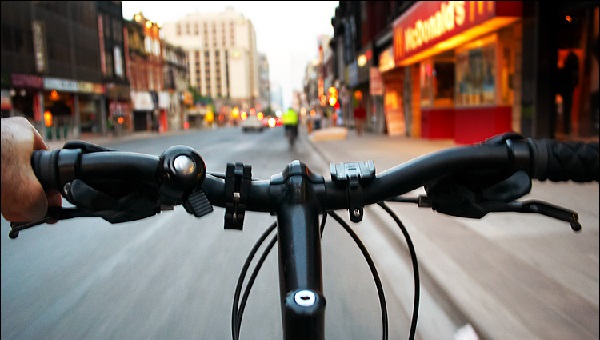
Grab a bike, grab a helmet, start off down the road. Bikes are one of the cheapest and most convenient modes of transportation which require little maintainence over their lifespan. They are ideal for most forms of terrain and notable for their manuverability, whether in urban, suburban, or rural areas. However, they can easily be the most dismissed of road users. Bikers and drivers do not always have respect for the other. Regular bikers may be familiar with the frustration for the lack of bike lanes on busy roads or roads just wide enough for cars. If there are bike lanes, they may be too narrow or chalked up with parked cars and debris. Bikers themselves are extremely exposed. It can often be them versus other vehicles in claiming a right to the road - bikers however having more to lose should any sort of accident occur. The less metal surrounding you, the more vulnerable you are. Many bikers choose to ignore traffic laws for their own safety.
Nevertheless, bike accidents remain high, especially in the US where cars are the prefered mode of transport and roads not conducive to biking culture. US cyclists have the greatest chance of fatality than any other country.
Statistics and Data
726 bicyclists killed and 49,000 bicyclists injured per year[1]
1 in every 20 injured annually[1]
Markets are saturated with existing products with the goal of improving bike safety, many of which are targeted to make bikes more visible to cars. Wearables are more difficult to advertise because they detract from the 'grab and go' nature bikes are supposed to have. Adding extras to the bike or rider only increases weight and can make it more tedious. As a result there is a very high threshold for bicyclists to even consider safety equipment and little adoption of safety means unless mandated by law - a challenge for all those who choose to take on the endevour to make an impact.
Existing Products
The Laserlight makes your presence known, alerts drivers to your approach and lets you be seen when you’d be otherwise invisible.
Bike lanes are an effective means of improving safety for motorcyclists and cyclists. However, due to the high cost of installation, bike lanes are not widely available. Instead of forcing cyclists to adapt their behavior to the existing infrastructure, the bike lane should adapt to the cyclist.
Proximity Sensing
Increases the range of vision and detect if there are any cars in blind spots. There are many types, such as built in and attachable to an existing bike.
Sources and Further Exploration
Pedestrians
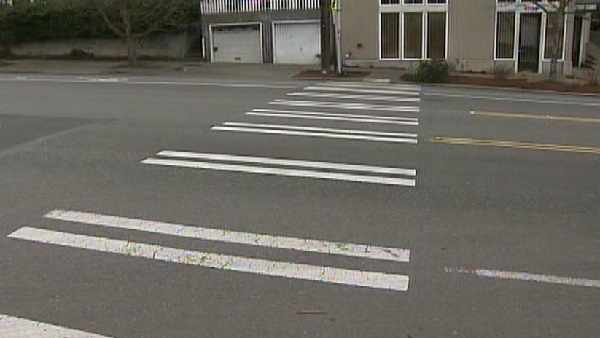
Walking (or skipping, running, storming, frolicking, etc.) by far is the most common mode of transportation. It is often unavoidable, whether it is taking a stroll or crossing the street after you park the car. It is also the most convenient given maximum mobility, cost efficiency, and being readily available - despite being relatively slow. Pedestrains are everyone because pedestrains are everyone. Every age, every gender, every nationality. However, pedestrains are the most vulnerable users of the road. Any collision, be it with a bicycle, motorcycle, or especially car, can mean major injuries or even death.
Crosswalks exist at the majority of intersections for pedestrian convenience. But not all pedestrians adhere to crosswalks or traffic signals. J-walking is common. Pedestrians crossing the street without waiting for the crosswalk signal is common - especially in cities. Pedestrians might walk freely in the road itself - especially if there is no sidewalk or regular traffic. Whatever is the most convenient to the pedestrian however is not always ideal for other road users. Consider the classic case of a child jumping in front of a car to catch a ball.
However, not all pedestrians are at fault either. Most intersections do not have traffic signals to stop oncoming cars, leaving the pedestrian to trust that both they and the stop signs (if any) are visible enough. If they are visible, vehicles may be going too fast to stop in time. Crosswalk signals themselves have timers which are measured against how long it would take an average adult to cross the street. Not ideal for children or the elderly. The elderly in particuar are at a disadvantage due to decreased agility and the fact that they can obtain far more severe injuries which take longer to heal. Right turn lanes are also notorious as vehicles may begin to turn without looking completely or have vision blocked, which can cause them to collide with an unnoticed pedestrian.
Statistics and Data
Pedestrians, when hit at 20mph -> 5% die; at 30mph -> 45% die; at 40mph -> 85% chance of being killed[1]
50% of fatal crashes occuring in intersections involve pedestrians +80 years old[2]
Challenges persist in providing safety to pedestrians. Due to the immense inconvenience, the threshold to have pedestrians themselves wear protective gear is extremely high, and apps which inform you of your surroundings will never replace actually looking around and being actively conscious of them. Marketed products should never be used as a substitute for natural senses unless there is actual impairment or need that demands attention.
Sources and Further Exploration
[1]Effects of Vehicle Speed on Pedestrian Fatalities
[2]Safety at Signalized Intersections: Presentation by the Federal Highway Administration exploring the problem space, crash types occuring at intersections, and proposed countermeasures
Intersections
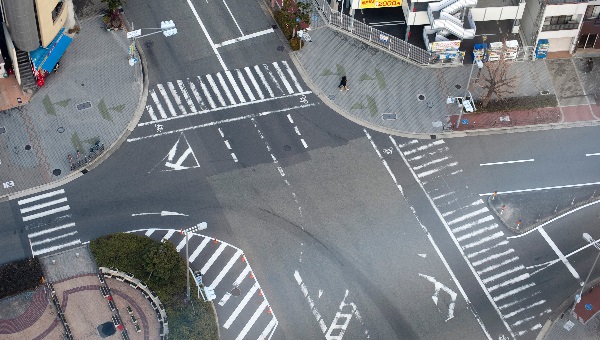
Intersections comes in many shapes, sizes, and forms. From the 3 way T-junctions and forks to a whole mass of options in the 5, 6, and sometimes 7-way - intersections serve as a meeting ground between traffic going different directions. They are a also critical meeting point between vehicles and vulnerable road users. Because of this, it is no wonder the accident rate at them is very high. It is easy place to be involved in a collision should there be any confusion as to who has the right of way, errors in judgement, distractions, etc. It is easy to blame human error. However infrastructure design can also greatly impair road user's ability to make safe judements and remain fully aware of their surroundings.
There are two types of intersection regulation: Signalized and Unsignalized. A signalized intersection be defintion has traffic lights. Some might also have cross walks and signals, though more major highways may not. A signalized intersection is usually implemented in areas with high density traffic. An unsignalized intersection may either have a stop sign or no sign at all, and usually compose more minor roads which are not considered traffic heavy enough to warrent the need for traffic signals. Round abouts and rotaries might also be considered an intersection type, however their function is considered different in the scope of context and will not be discussed. It is estimated that there are 300,000 signalized intersections in the US, and 2.7 million unsignalized intersections (that is 100 intersections per American for scale). But while there is a large gap in abundance, signalized intersections make 1/3rd of all intersection fatalities. Part of the reason may be attributed to signalized intersections dealing with grater traffic flow.
Statistics and Data
50% of fatal crashes occuring in intersections involve pedestrians +80 years old[1]
21% of all fatal road crashes occur at intersections (2007)[1]
25% of rural crashes occur in intersections[2]
50% of urban crashes occur in intersections[2]
40% of intersection crashes involve a view blockage[2]
Most common mistake is "improper lookout"[2]
Most intersection crashes happen in clear weather 78.6% (2007)[2]
Recognition error is responsible for 55.7% of accidents[3]
Signaled intersection costs $250,000 to implement (according to Needham's Traffic Management Committee)[0]
Lane painting for bike paths - ~$34,000[0]
Intersections are the critical meeting point of vehicles and vulnerable road users
2007 - 21.5% of all traffic fatalities at intersections[3]
2007 - 40% of all reported crashes[3]Signalized: 2.5 million injured; 300,000 intersections; 2755 fatalities[4]
Unsignalized: 2.7 million intersections; 5539 fatalities[5]
Reasons for crashes age 55 - older: Inadequate surveillance; misjudgement of gap/other's speed[2]
Reasons for crashes age 25 - 54: critical non-performance error; inattention; too fast/aggressive[2]
Reasons for crashes age 24 - younger: false assumptions of other's actions; too fast/aggressive; external distraction; turn with obstructed view[2]
It might sound easy to place up more signs or draw lines on the road to better assist with traffic regulation. However a few challenges persist in infrastruture improvement space. The first is that any infrastructure change can cost thousands to hundreds of thousand tax dollars. The second is knowing whether any changes would actually be useful (pre) and if those changes have actually served to improve traffic safety (post). Data collection is greatly desired by the bureaucracy to convince them not only time and money is worth spending, but that it does not make the intersection worse and it complies with the giant manual of rules and standards all intersections must meet. Larger cities may have a system to collect this data - but much of it is manual surveying and feed from police reports spanned over several years. Smaller cities may not have that luxury and be more reactionary. Namely, citizens present problems and propose potential changes to a board, who then decide the best course of action to take. If any. Citizens may unfortunately lack convincing data to their case, or not know how to interpret it, and be dismissed. This process too can span over several years just to get something as simple as a "no turn on red" sign to be implemented.
Existing Products
Sources and Further Exploration
[1]Safety at Signalized Intersections: Presentation by the Federal Highway Administration exploring the problem space, crash types occuring at intersections, and proposed countermeasures
[2]Crash Factors in Intersection-Related Crashes: An On-Scene Perspective (PDF)
[3]The National Intersection Safety Problem (PDF)
[4]CDC report shows motor vehicle crash injuries are frequent and costly
[6]Signalized Intersections: Informational Guide: "This guide provides a single, comprehensive document with methods for evaluating the safety and operations of signalized intersections and tools to remedy deficiencies..."











